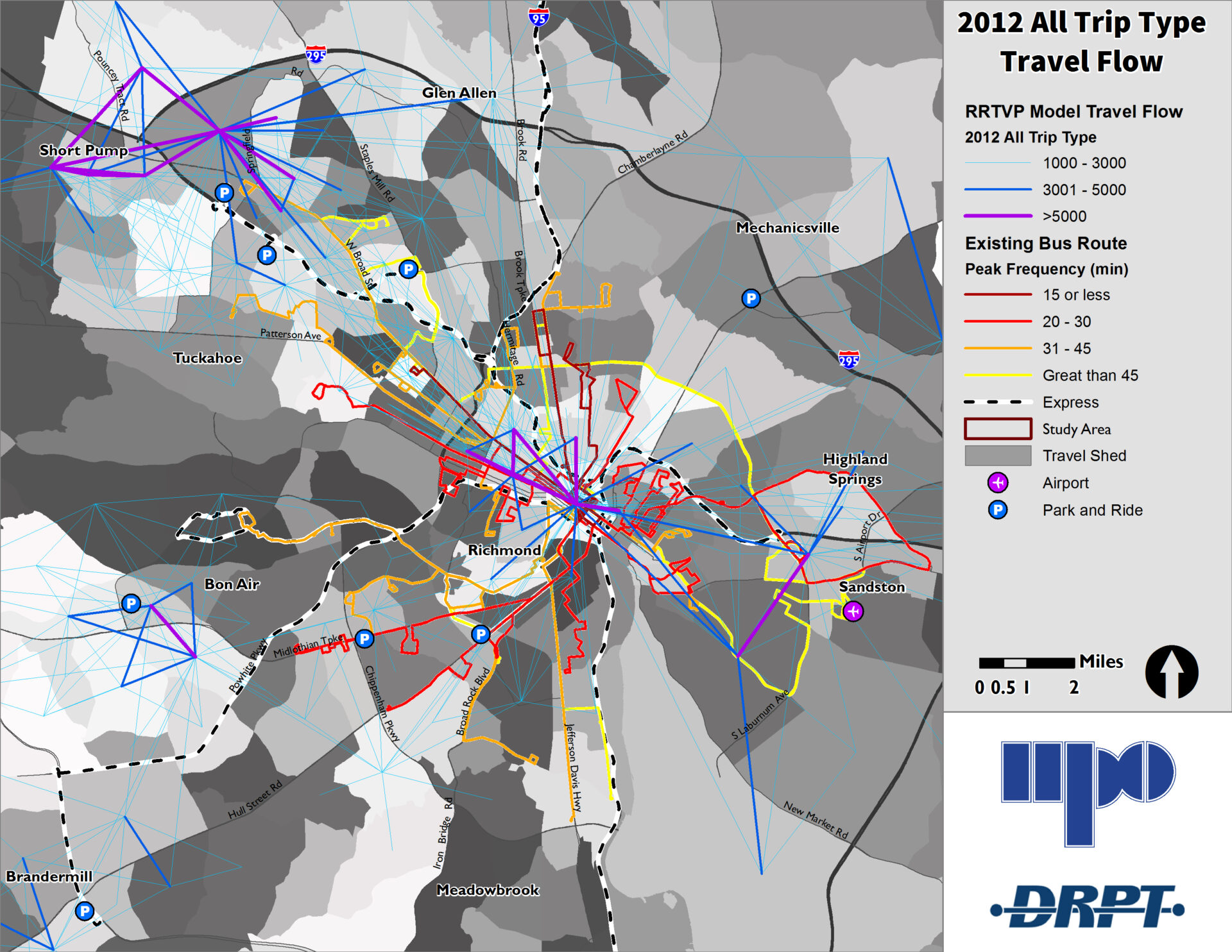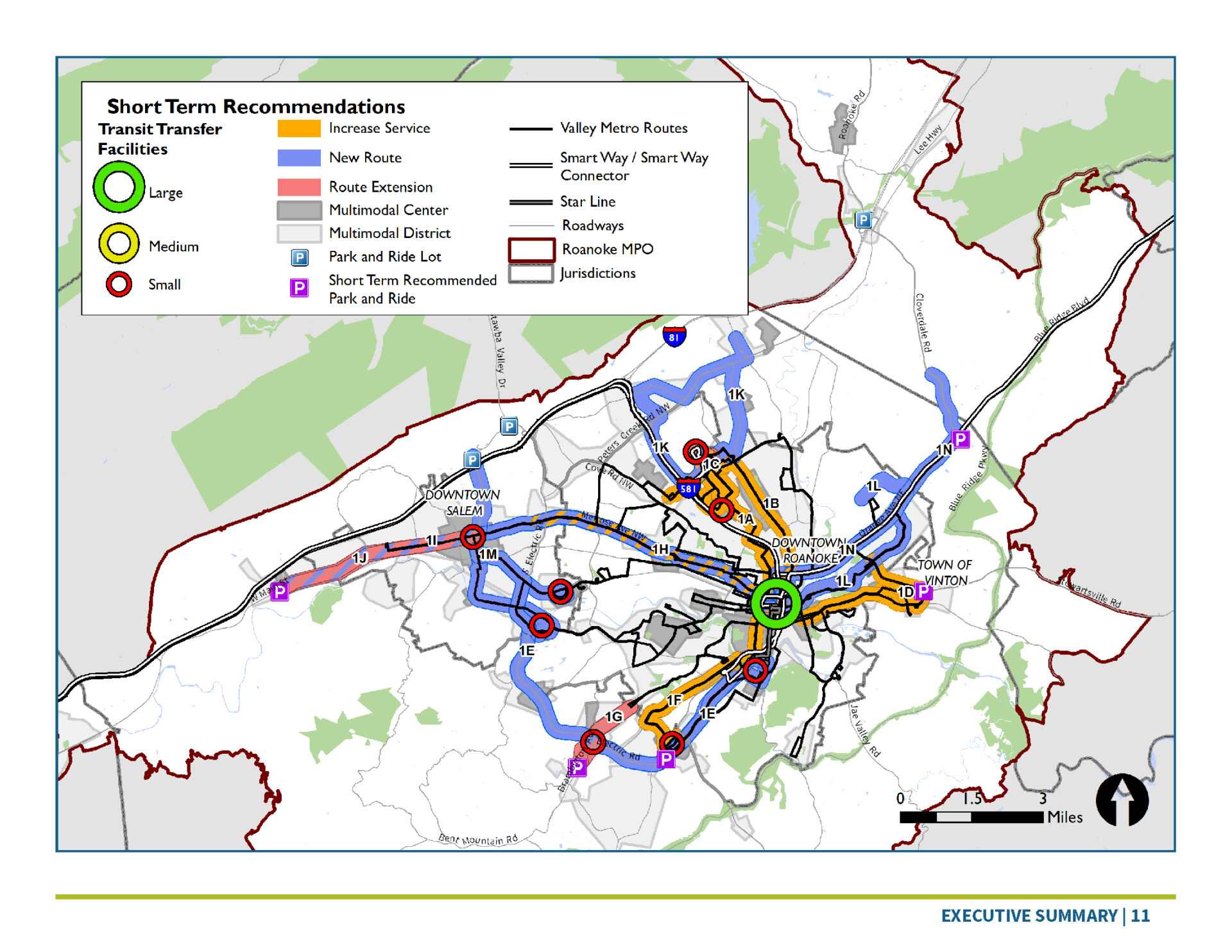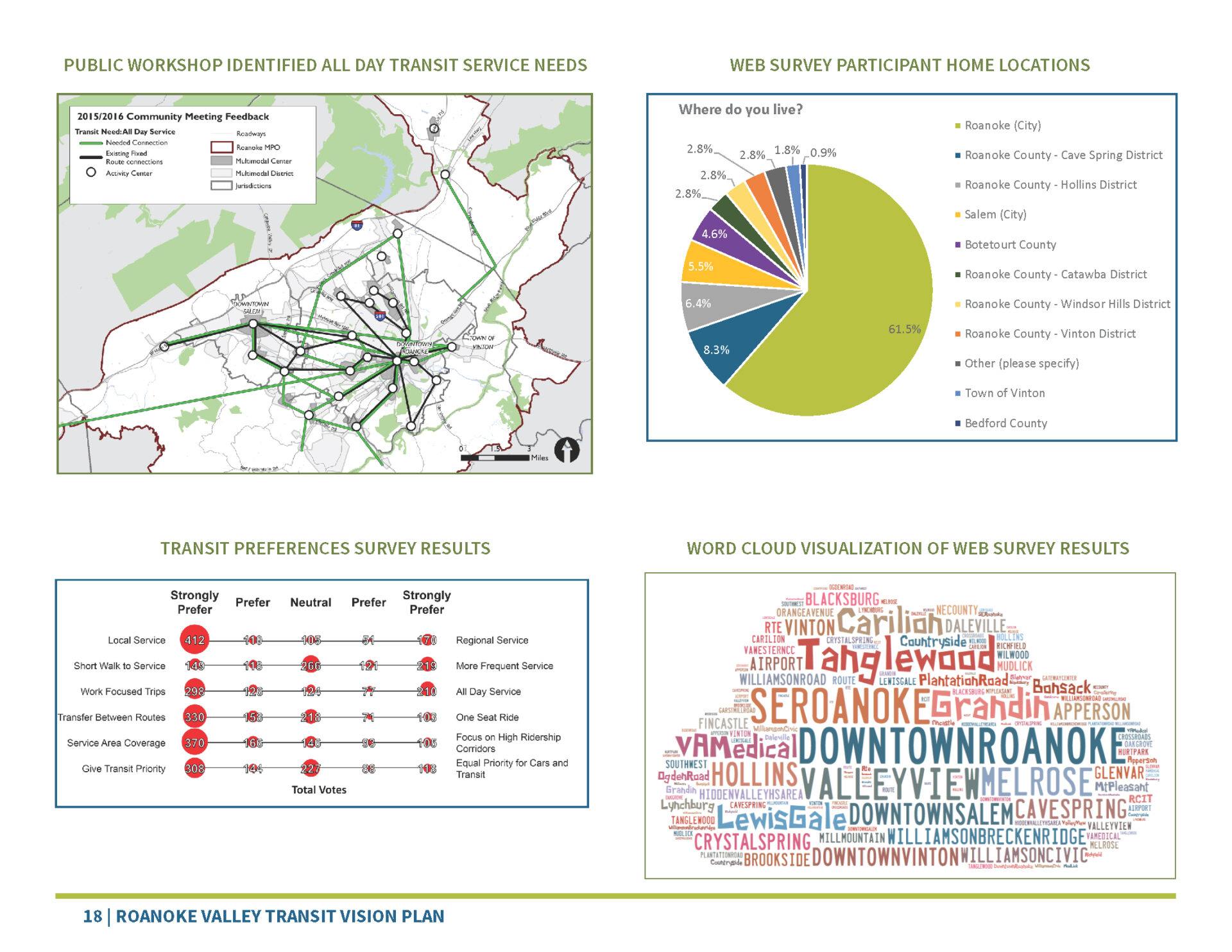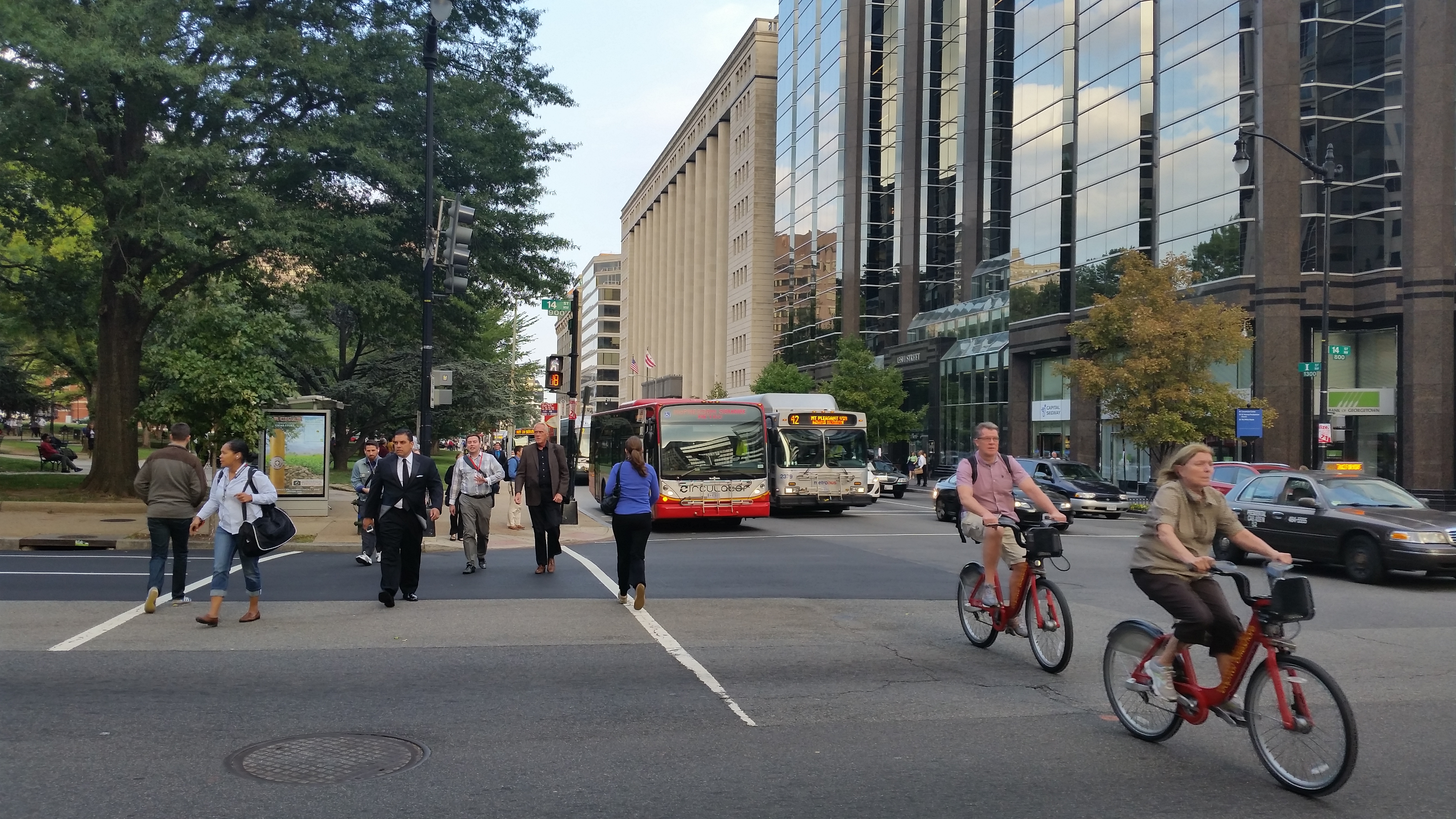Transit Vision Plans can and should be actionable blueprints for transforming the landscape of a city or region through innovative planning to help define an actionable vision. Agencies are no longer interested in unattainable transit plans that lay down every conceivable mode, from everywhere to everywhere, in an attempt to serve every potential trip. Stakeholders and the public alike are turned off by these plans because, frankly, they seem farfetched with no reasonable path from the existing state to future transit nirvana. As a result of this feedback, over the past two years, the Foursquare ITP team has taken a different approach to developing transit vision plans.
We have recently worked on three vision plans that are data-driven and actionable: Connect Hampton Roads, the Roanoke Valley Transit Vision Plan, and the Greater Richmond Area Transit Vision Plan. For each of these plans we combined our proprietary transit propensity planning tool with regional model outputs and public/stakeholder feedback to develop phased multi-modal plans to transform land use and travel in these areas. This data-driven approach provided the base information for the subsequent stakeholder and outreach process to gain support for the plan and obtain funding to implement a robust and sustainable regional transportation network.
Under contract to Hampton Roads Transit in Norfolk, Virginia, we created Connect Hampton Roads (CHR), a multi-modal action plan. CHR will improve regional mobility between 13 jurisdictions, covering over 2,000 square miles and encompassing 3 transit agencies, to support economic growth and improve quality of life in the Hampton Roads region. The innovative technical planning process produced a plan that assessed the transportation needs of the region across a myriad of modes (bus, light rail, ferry, walking, and bike share) traversing jurisdictional boundaries.
Following that effort, we were retained by Roanoke Valley Transportation Planning Organization (RVTPO) to lead the Roanoke Valley Transit Vision Plan (RTVP). This Plan was an outcome of the Livable Roanoke Valley Plan previously developed to address a broad range of challenges facing the Roanoke Valley and plan for a better future, including economic development and workforce development– both goals that are strongly supported by a robust transit network. The RTVP included extensive public outreach to the general public, riders, and bus operators, along with transit usage data. Our data-driven approach was used to support the stakeholder input and identify existing and future gaps, needs, and strategies to improve connectivity within and between regional multimodal districts.
At the same time, working as a sub-consultant to Michael Baker International, we began work on the Greater Richmond Area Transit Vision Plan. Based on extensive community input, this plan included a greater focus on connecting surrounding communities with each other, and creating peak period employment connectors that serve a wide variety of employment sites. Our team also designed a network of phased Bus Rapid Transit (BRT) corridors based on the propensity analysis and model trip flows. Stakeholders and the public supported these elements, understanding that the benefits of rapid transit go well beyond improving mobility for those that will use it.

All of these communities see transit visioning not as great “what if” exercises, but as something that is happening right now, something they can be part of, to revolutionize the way people live and move around in areas currently dominated by roads, vehicles, and oceans of parking. They don’t see these plans as something for someone else to pick up and carry in the future, nor a promised land of transit for future generations. They see this as something they can engage with now, promote now, and realize real change, yes, now.
After decades of building towards an unsustainable future that everyone now realizes we can’t build ourselves out of, all generations of people are realizing the need not just for transportation networks that meet all modal needs, but for transportation networks that will revolutionize where and how we live. This is the future we are striving for at Foursquare ITP–helping communities realize this future through the development of transit and multimodal vision plans that demand action, and result in transformation.


